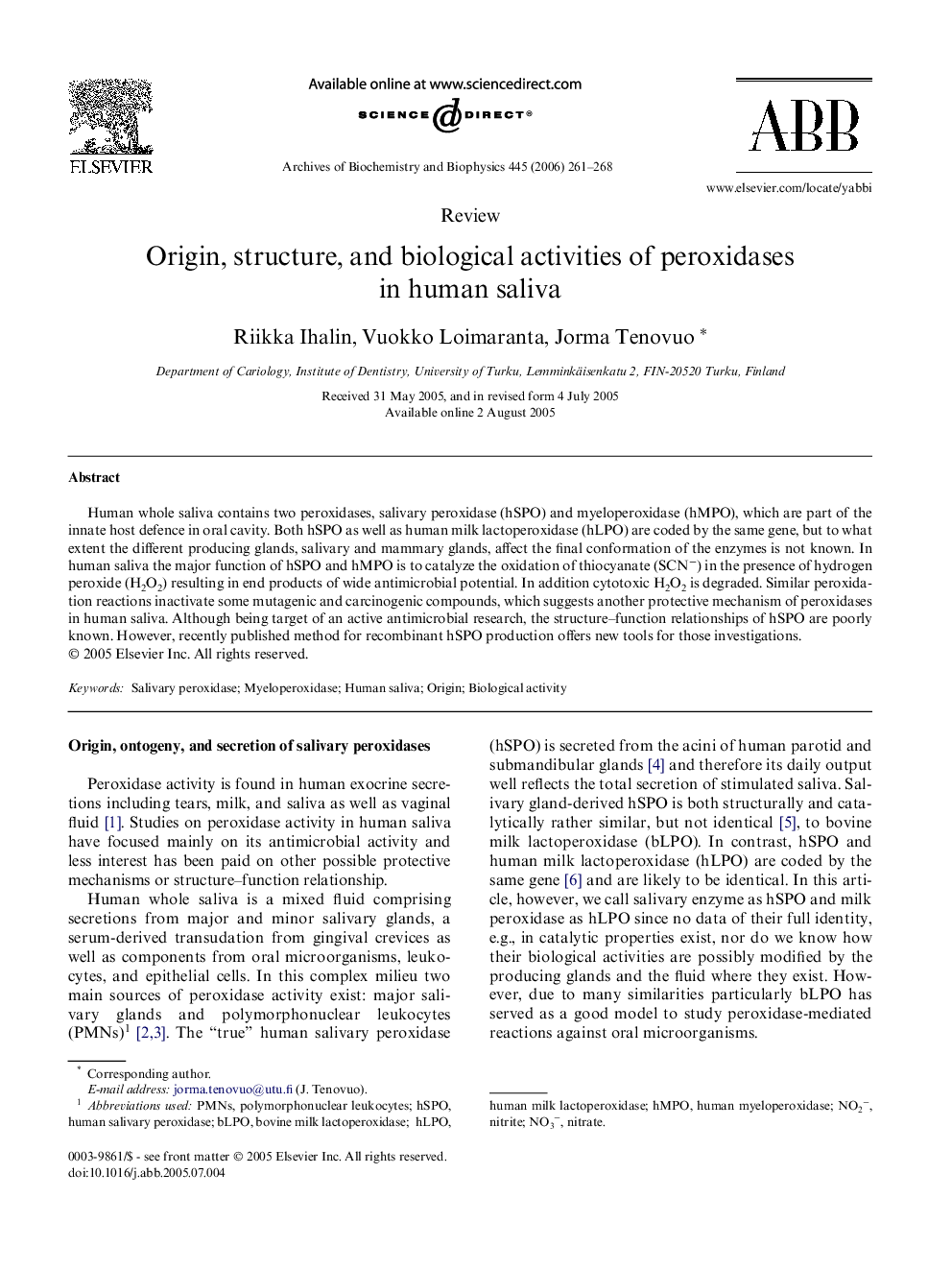| Article ID | Journal | Published Year | Pages | File Type |
|---|---|---|---|---|
| 1927604 | Archives of Biochemistry and Biophysics | 2006 | 8 Pages |
Human whole saliva contains two peroxidases, salivary peroxidase (hSPO) and myeloperoxidase (hMPO), which are part of the innate host defence in oral cavity. Both hSPO as well as human milk lactoperoxidase (hLPO) are coded by the same gene, but to what extent the different producing glands, salivary and mammary glands, affect the final conformation of the enzymes is not known. In human saliva the major function of hSPO and hMPO is to catalyze the oxidation of thiocyanate (SCN−) in the presence of hydrogen peroxide (H2O2) resulting in end products of wide antimicrobial potential. In addition cytotoxic H2O2 is degraded. Similar peroxidation reactions inactivate some mutagenic and carcinogenic compounds, which suggests another protective mechanism of peroxidases in human saliva. Although being target of an active antimicrobial research, the structure–function relationships of hSPO are poorly known. However, recently published method for recombinant hSPO production offers new tools for those investigations.
